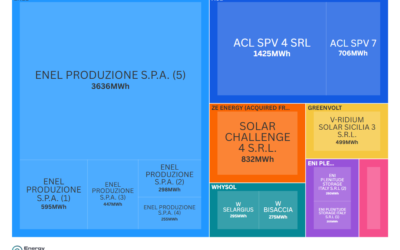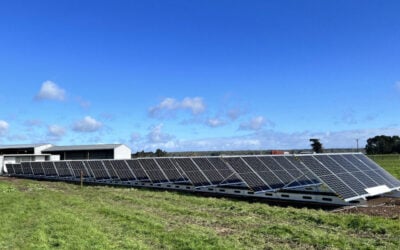Energy storage specialist Imergy Power Systems has announced that its vanadium flow batteries will be used at a “smart micro-grid” demonstration project hosted by the US Navy.
Imergy, which has offices in California and India, announced on Monday that the project’s developer, Foresight Renewable Solutions, will be using the batteries at a project based at the US Navy’s Mobile Utilities Support Equipment (MUSE) Facility in Port Hueneme, California.
The Smart Microgrid project is sponsored by the California Energy Commission (CEC) and will examine use cases for storage from four main angles. It will look at managing demand charges, load shifting, smoothing the variable output of solar energy and operating in “island mode”, whereby critical loads can be provided even when grid power is disconnected.
While the latter, island mode, will look at applications that could be transferred to military specific use, such as remote facilities used on military operations, the overall aim of the project is to “optimize power consumption at military bases, college campuses, industrial parks and other institutions”, according to Imergy.
Try Premium for just $1
- Full premium access for the first month at only $1
- Converts to an annual rate after 30 days unless cancelled
- Cancel anytime during the trial period
Premium Benefits
- Expert industry analysis and interviews
- Digital access to PV Tech Power journal
- Exclusive event discounts
Or get the full Premium subscription right away
Or continue reading this article for free
Demand charge management will look at cutting peak demand by releasing energy in short bursts when applicable, while load shifting can mitigate the effect of time of use charges as are typical in US electricity markets. Meanwhile, the use of storage to smooth variable solar output has similarly been long-talked about as a possible solution to barriers preventing increased storage deployment and renewable energy generation capacity.
The US Navy already sources 12% of its energy from renewable sources, according to official figures. Image: wikimedia User: U.S. Navy photo by Photographer’s Mate 2nd Class Larry S. Carlson.
Three of Imergy’s ESP30 series vanadium-based flow batteries will be installed, made with vanadium recycled from waste. Imergy claims this and other factors allow the company to reach the “best performance and price points in the industry”. According to the company, this means it can deliver energy at US$300 per kilowatt hour, compared to US$500 for a turnkey system. In November, Imergy was also awarded a contract to supply four vanadium flow batteries to be used in conjunction with solar installations and micro-grid tests in Hawaii.
The ESP30 series has a 50kW capacity and can store 200kWh of electricity. The batteries, set up to deliver 100kW/400kWh at the project, will be connected to a 50kW solar PV array. Automation software used for the Port Hueneme project will be Growing Energy Labs Inc’s (GELI) Energy Operating Software (EOS). GELI claims EOS creates an “internet of energy” in the way it links storage to power systems, network operations and other critical components.
Containerised electrolytes as used in flow batteries of the type produced by Imergy are thought to allow a good opportunity to scale up as they merely require the addition of larger tanks with more electrolytes in them to add energy capacity to the battery system. As such they are not considered suitable for use at smaller scales, such as residential storage, where lead-acid or more recently lithium-ion batteries are commonly used.
Imergy’s cost-cutting strategy to recycle vanadium from environmental waste is one way of minimising the cost of materials for flow batteries. Recently, Canada-headquartered American Vanadium unveiled a plan to set up a vanadium mine in the Nevada Desert. At the time, the company’s chief executive officer Bill Radvak told PV Tech Storage that it saw this strategy as the best avenue available to American Vanadium to hedge against “spikes” in vanadium pricing.
According to official figures, the US Navy already sources 12% of its energy from renewable sources. Similarly, PV Tech Storage’s sister site PV Tech has reported frequently on solar energy projects for the US military forces. One such example was the award in August 2013 of US$7 billion worth of solar contracts to be developed on Department of Defense (DoD) land. Intensive energy use and the frequent need for portable or off-grid power are thought to be among the drivers of this increasing interest in renewable energy. In February PV Tech Storage reported that another grid-scale storage company, Primus Power, was supplying flow batteries to a micro-grid project at a military base in San Diego, California. Elsewhere, UK company Oxis Energy, which is developing products around the energy-dense battery chemistry of lithium sulfur, is supplying the British military with battery packs for portable applications.





